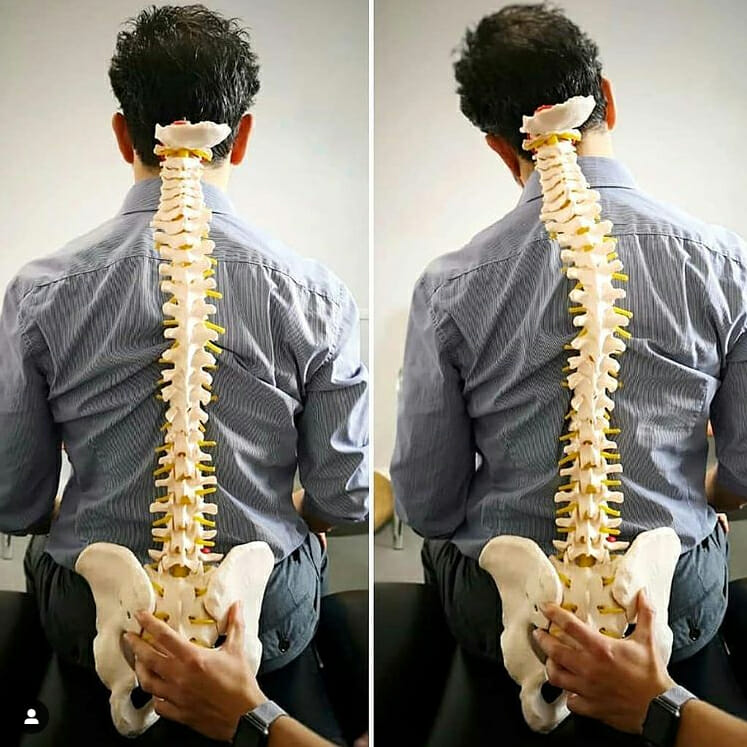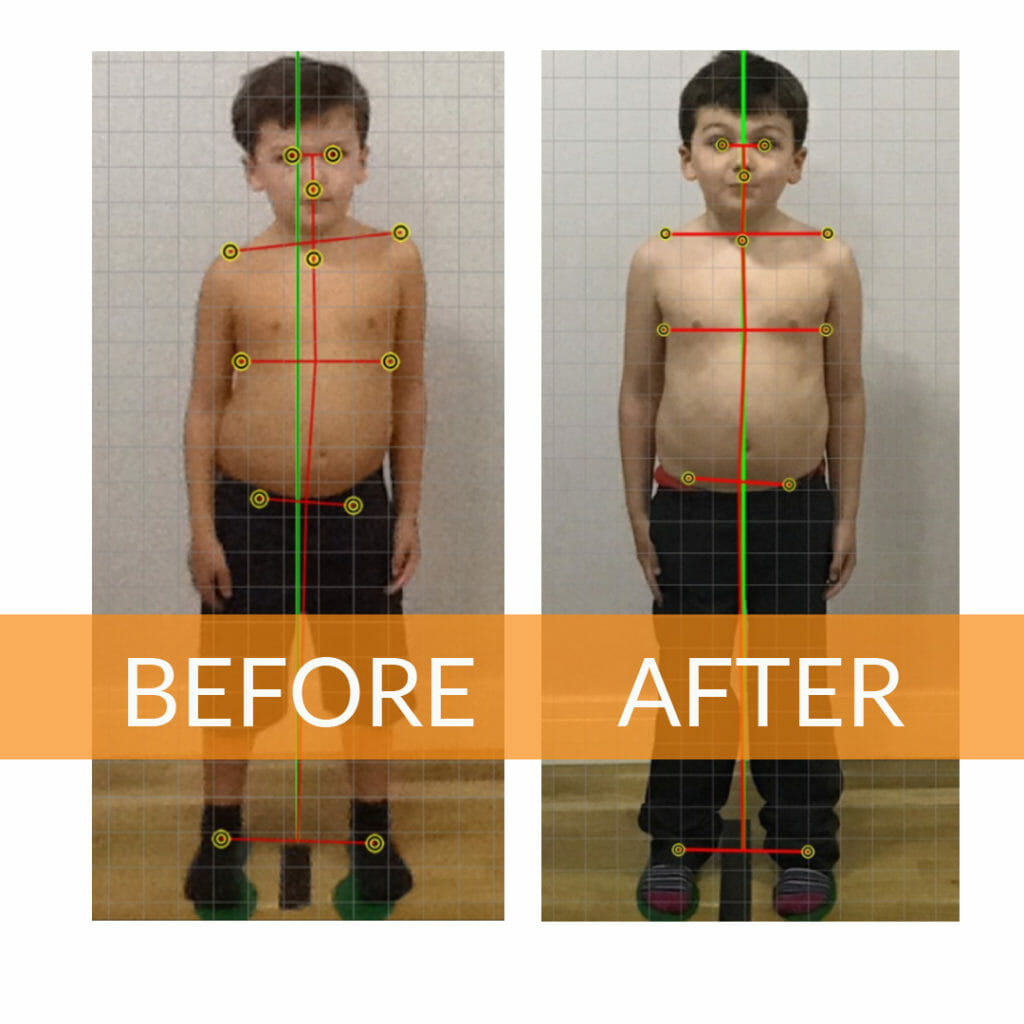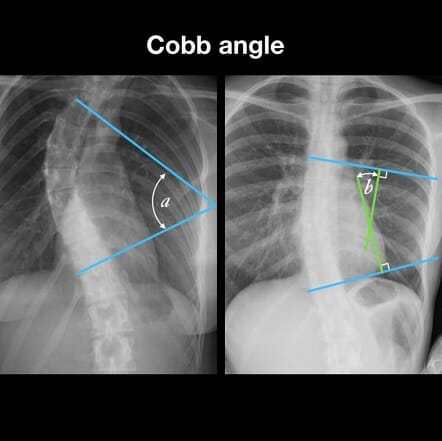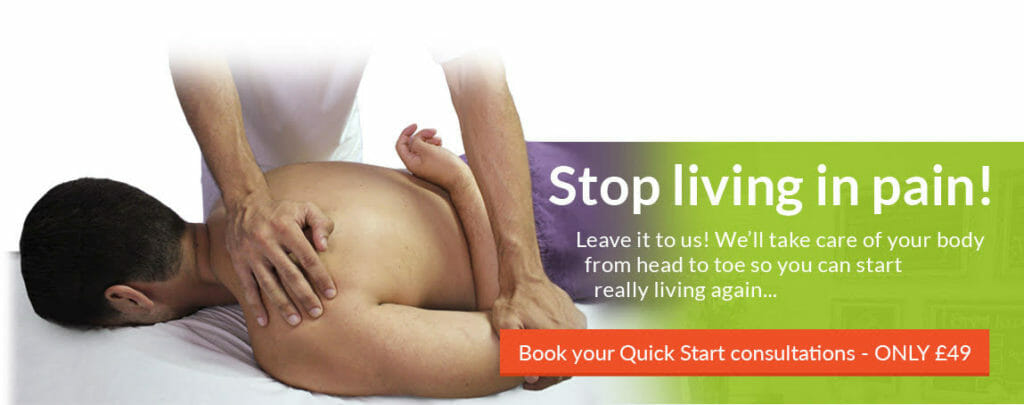
What is Scoliosis and why is it important to spot it? Read on for everything you need to know:
What is Scoliosis?
When looking at someone’s spine from the back, it should typically appear relatively straight. A scoliosis is a sideways curvature (at a minimum of 10 degrees), with accompanied rotation of the spine. There may be one or more of these curves. This can be spotted when someone has one shoulder or hip higher than the other, or uneven shoulder blades.
Occasionally, it may not be so obvious.
Patients who present to us with suspected or confirmed scoliosis can feel quite concerned about it. While it is important to screen, diagnose and manage the condition, there is often a lot that can be done conservatively to ease tension, reduce pain and improve posture…
What problems do people usually have with Scoliosis?
 The symptoms of scoliosis can vary from one person to the next. This can be due to age, curve severity, location on the spine and causation. Uneven pressure from curves will cause compression of ligaments, muscles and nerves, which can result in symptoms of pain and stiffness. There may also be little or no symptoms, but noticeable imbalances.
The symptoms of scoliosis can vary from one person to the next. This can be due to age, curve severity, location on the spine and causation. Uneven pressure from curves will cause compression of ligaments, muscles and nerves, which can result in symptoms of pain and stiffness. There may also be little or no symptoms, but noticeable imbalances.
Jesse, age 6, came to see us after his schoolfriend noticed he had a curved spine. He went to his GP, who got him seen under the NHS and was diagnosed with scoliosis (curvature of the spine).
The doctors told him it was severe enough to require surgery. Whilst waiting for the consultation with the surgeon, he received chiropractic care – with outstanding results.
Not only can you see how much his posture has improved but he rarely complains to his Mum about his back anymore. And the best thing is that the NHS consultant has now confirmed that he won’t need surgery .
What causes scoliosis?
Scoliosis is often deemed mysterious as most cases do not have a specific causation. In fact, approximately 80% of known diagnosed scoliosis is classified as ‘idiopathic’, which means there is no known cause. Occasionally, there are associations with trauma, genetics, neuromuscular (nervous and muscular systems) or degenerative changes.
How can we help?
 Your Chiropractor will go through a full history and examination, taking on board an understanding of the concerns, life-effects and personal goals surrounding your case. As well as observed changes in posture and alignment, we can measure the amount of curvature on X-rays using what’s called a ‘Cobb angle’ (see below). The larger the angle, the more advanced the curve.
Your Chiropractor will go through a full history and examination, taking on board an understanding of the concerns, life-effects and personal goals surrounding your case. As well as observed changes in posture and alignment, we can measure the amount of curvature on X-rays using what’s called a ‘Cobb angle’ (see below). The larger the angle, the more advanced the curve.
Our next article will give you an insight into the experience of those who have benefitted from our care. Stay tuned!
In conclusion:
If you suspect you, or someone you know might be suffering from scoliosis, even if they are not aware and are not in any pain, it’s always a good idea to get it checked out. You could prevent further damage from occurring and avoid long term problems.
Call us to book a no obligation consultation


